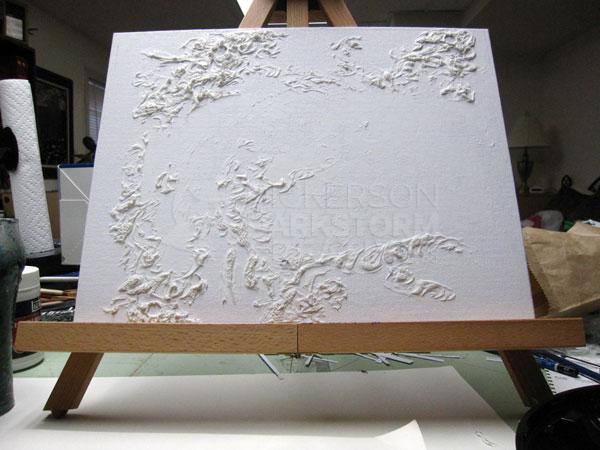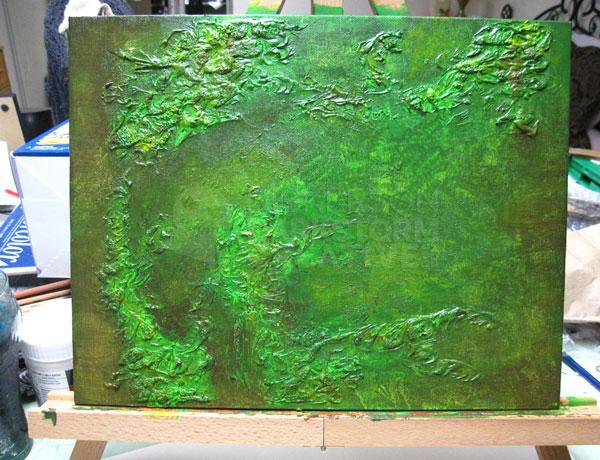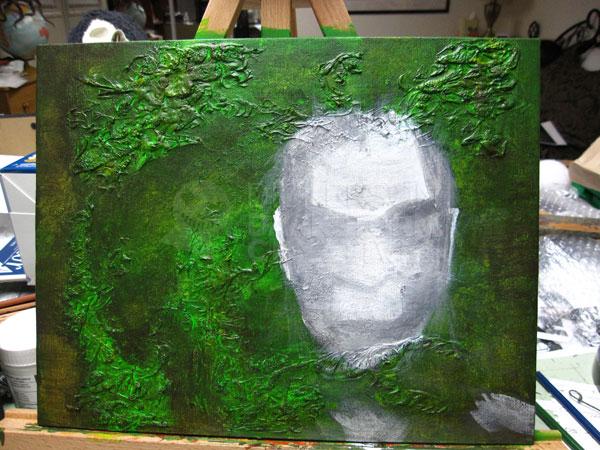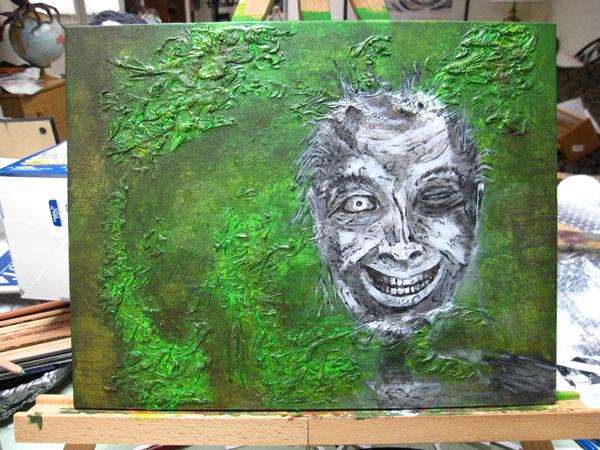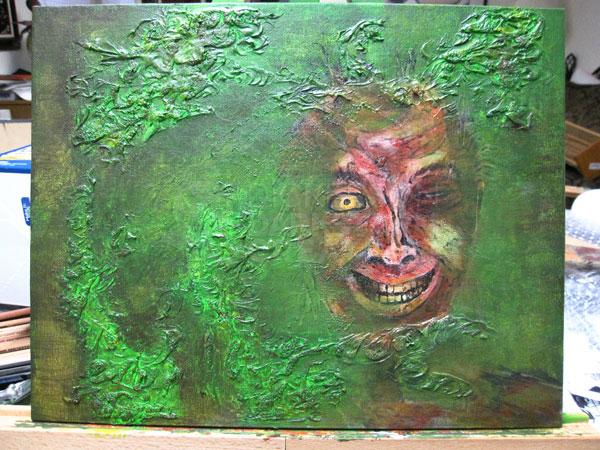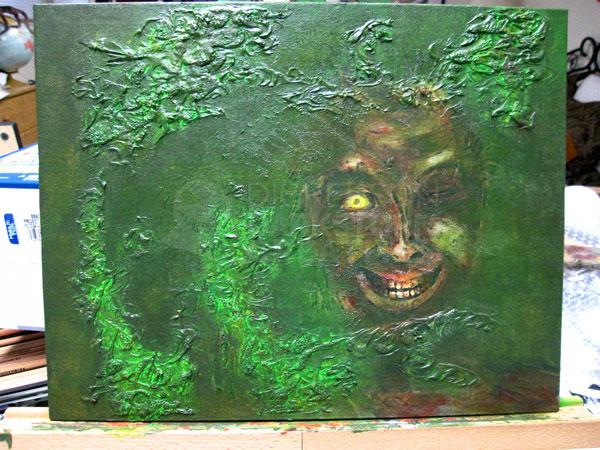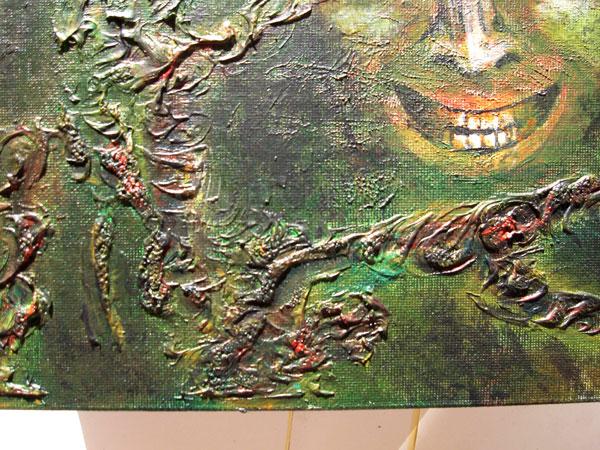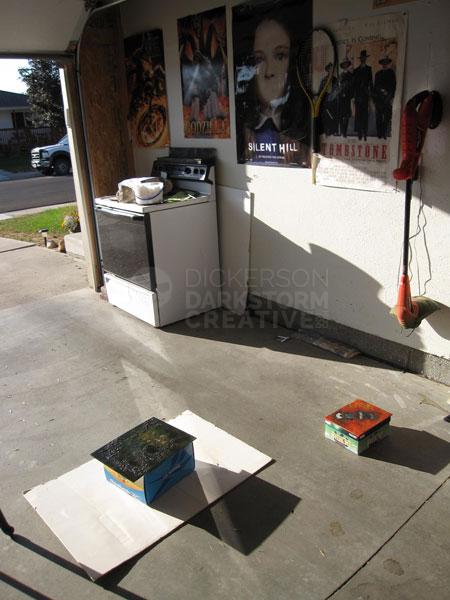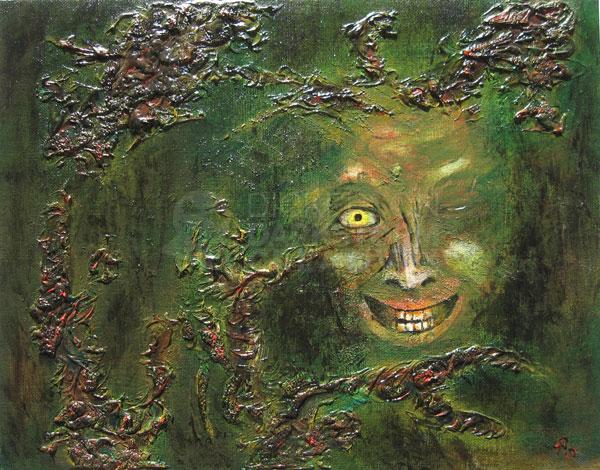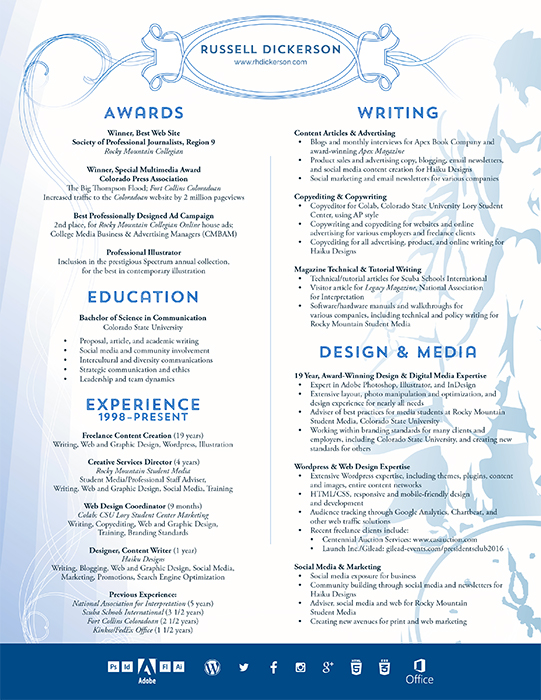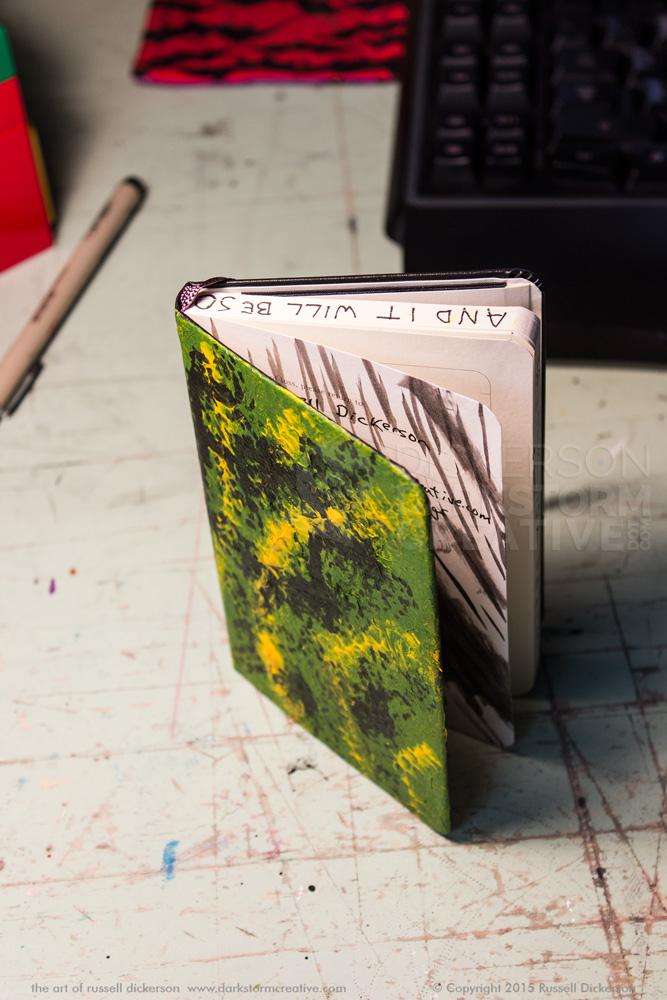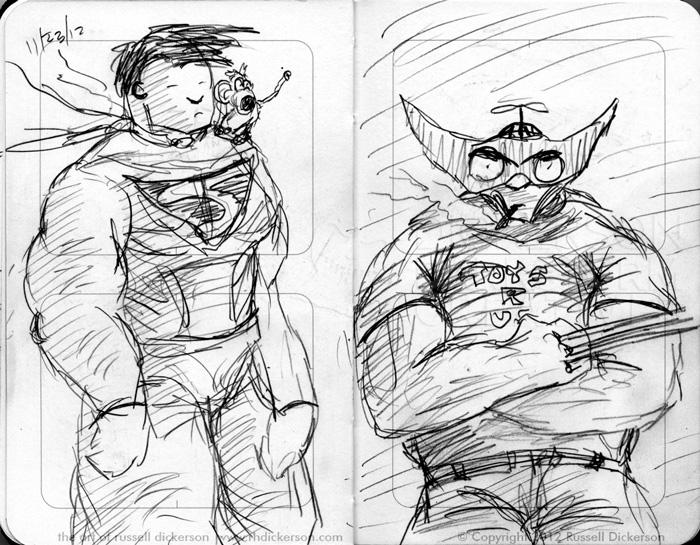Last weekend I was able to finish a painting that I’d wanted to do for some time. Not a digital image, but an acrylic painting. Here’s what it looked like in the gallery on Friday night:
If anyone read the previous blog entry (not betting on it) about the original “infection” piece (here), you’ll recognize the frame that the painting is in. When it was at the gallery in September, no one really looked at it with the digital print in it.
So, being inspired by my friend and fellow artist Jeff Herndon (who I share the space with in the gallery), I’ve been trying to do more traditional art. Now that I have a house and a studio, I have the space to give it a shot.
A few folks online wanted me to document my next painting, something that wasn’t possible with the three Maelstrom covers I just completed. So while I was painting this one I snapped photos as I went, which, if anything, is worth a giggle to see my ridiculously unprofessional methods as an artist. I call it the “brute force” method.
So, here we go. First off, having the frame already “destroyed”, I lightly penciled in where the infected parts of the frame were. Using Liquitex Flexible Modeling Paste, I added raised areas where the “infection” was ravaging things. I thought this would give it an interesting dimensionality, and something that’s just different from the digital work.
The paste comes out very much like frosting, though it does dry hard enough. Eventually I added it across the whole panel, in the areas needed. I tried to twirl it and create interesting patterns in it, to mimic the idea of a real infection as best as I could. Then I went and watched a movie (“REC”, a really good flick) and let it dry.
After the movie (go rent it, though I watched for free on OnDemand), I used the acrylics to gradually build up a bit of an abstract background. I was shooting more for a textured idea in paint to compliment the infected areas, and on them I brushed in various colors to give them a slightly different effect.
After that, I started blocking in the face that I wanted to appear in the painting. First, just the background/skin…
Then, I added in more details (no laughing, we call it a “work in progress”)…
Followed by various skin tones and effects…
Now, at this point, despite all the work to make the face what it was, I wanted it blended more with the background. I was looking for an effect like the face is peering in from the other side of the painting, like it wants out. So I blended the face in quite a bit more, then just added a few highlights here and there for contrast.
I also decided, after holding the brush over it for twenty minutes deciding if I really should do this, that I wanted the whole thing darker. So, I started painting in various areas, especially the infected areas, to make the overall piece darker. Here’s a closeup of the infected area:
Deciding that I’d already messed up the whole works beyond repair, I went to the store and picked up some gloss acrylic varnish. The varnish protects the painting as a clear coat on top of it, and in fact it even enhanced the colors of the piece after I was finished.
The varnish is a spray, and would probably kill everything in a twenty mile radius (except earwigs, of course), so I set up a spot in the garage and sprayed a few coats on the piece (and on another one).
That really is the cleanest corner of the garage too.
After the varnish, I took another photo of it, and you can tell (even in my crappy photos) that the colors are deeper and more refined than before. Thus, here it is, the final piece (sans frame), Infection Unbound:
The acrylic painting was fun, and I have several more ideas to try. There were quite a few comments at the gallery the other night about the dimensionality of the piece, which I thought was great. Now I just need to figure out how to sell it.
Opinions?


